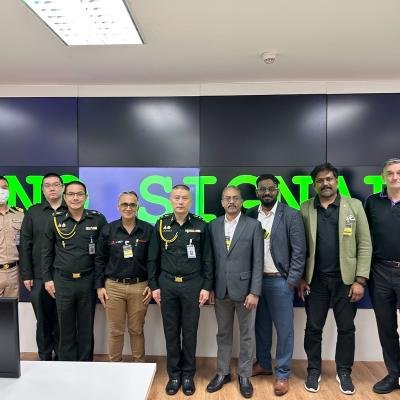In recent years, the cybercrime landscape has witnessed a significant and troubling development - the rise of Ransomware-as-a-Service (RaaS). Ransomware, a type of malicious software that encrypts a victim's data and demands a ransom for its release, has become a favored tool among cybercriminals. RaaS takes this threat to a whole new level by making sophisticated ransomware capabilities accessible to a broader range of attackers, including those with limited technical expertise. This blog delves into the alarming trend of RaaS and explores its impact on individuals, businesses, and the cybersecurity landscape at large.
Understanding Ransomware-as-a-Service (RaaS):
What is RaaS?
Ransomware-as-a-Service (RaaS) is a cybercriminal business model that allows hackers to rent or purchase ready-made ransomware tools and infrastructure from more skilled developers. RaaS operators provide aspiring attackers with everything they need to conduct ransomware attacks, including malicious software, deployment support, and payment processing systems.
How RaaS Works:
The RaaS model typically involves a revenue-sharing scheme between the RaaS developers and the attackers. The developers create and maintain the ransomware, while the attackers use it to target victims and extort ransoms. The developers take a cut from the ransoms paid by victims, incentivizing them to keep improving their ransomware offerings.
The Proliferation of RaaS Platforms:
- Popularity among Cybercriminals: The RaaS model's popularity stems from its simplicity and accessibility. Even individuals with limited technical expertise can now launch ransomware attacks with potentially devastating consequences. As a result, the number of ransomware attacks has surged, affecting individuals, businesses, and even critical infrastructure.
- RaaS Variants and Customization: RaaS platforms come in various flavors, each catering to specific niches of cybercriminals. Some RaaS offerings are highly customizable, allowing attackers to tailor the ransomware to suit their specific targets, increasing the likelihood of successful infections.
High-Profile RaaS Attacks and Impact:
- Colonial Pipeline Attack: The Colonial Pipeline ransomware attack of 2021, perpetrated by the DarkSide group, demonstrated the real-world consequences of RaaS. The attack resulted in fuel shortages along the East Coast of the United States and underscored the vulnerability of critical infrastructure to cyber threats.
- JBS Food Supply Chain Disruption: In another high-profile incident, JBS, the world's largest meat processing company, fell victim to a RaaS attack. The REvil ransomware group targeted JBS, leading to temporary production shutdowns and supply chain disruptions.
The Role of Cryptocurrencies in RaaS:
- The Appeal of Anonymity: Cryptocurrencies, particularly Bitcoin, are the preferred method of payment for ransoms in RaaS attacks. The inherent anonymity of cryptocurrencies makes it difficult for law enforcement agencies to trace and apprehend the attackers, enabling them to operate with relative impunity.
- Challenges for Law Enforcement: The use of cryptocurrencies in ransom payments poses significant challenges for authorities investigating RaaS attacks. The decentralized nature of blockchain technology adds complexity to tracking ransom transactions and identifying the perpetrators.
Combating the RaaS Threat:
- Strengthening Cybersecurity Measures: Individuals and organizations must prioritize cybersecurity best practices to protect against ransomware attacks. Implementing robust backup and disaster recovery solutions, keeping software up-to-date, and conducting regular employee cybersecurity training are essential steps in mitigating the RaaS threat.
- Collaboration and Information Sharing: Collaboration among organizations, industry sectors, and governments is crucial to combat the RaaS boom effectively. Information sharing about emerging threats and attack trends can help entities stay one step ahead of cybercriminals.
Examples and Evidence:
RaaS Platforms on the Dark Web: Numerous RaaS platforms have been identified on the dark web, providing aspiring cybercriminals with easy-to-use ransomware tools and services. These platforms often offer a user-friendly interface, customer support, and a revenue-sharing model with the developers, allowing even novice hackers to launch sophisticated attacks.
Evidence: Cybersecurity researchers and law enforcement agencies have conducted undercover operations to infiltrate and monitor RaaS platforms, gathering evidence of their existence, functionalities, and offerings.
Proliferation of Ransomware Attacks: The increase in ransomware attacks in recent years is indicative of the RaaS boom. High-profile incidents affecting organizations, governments, and critical infrastructure have been reported globally, causing widespread disruption and financial losses.
Evidence: News reports and cybersecurity incident response teams' public statements document a surge in ransomware attacks and the involvement of RaaS operators in these criminal activities.
Ransomware Variants and Customization: RaaS has enabled cybercriminals to create and distribute multiple variants of ransomware, each with unique capabilities and techniques to evade traditional security measures. The ability to customize ransomware payloads based on the target's vulnerabilities makes RaaS an attractive option for criminals.
Evidence: Analysis of ransomware samples by cybersecurity experts reveals distinct code bases, encryption algorithms, and tactics that align with the RaaS model. They have also identified ransomware families that appear to be derived from specific RaaS platforms.
Escalation in Ransom Demands: RaaS operators often dictate the ransom demands and terms, seeking larger payouts from victims. The availability of professional negotiation services for cybercriminals has further enabled them to extract more significant sums of money from targeted organizations.
Evidence: Incidents involving ransomware attacks have been documented, including ransom demands and communications between victims and cybercriminals, showcasing the financial motivation behind RaaS operations.
Support for Non-Technical Criminals: RaaS platforms attract a wider range of criminals, including individuals without extensive technical skills. RaaS developers offer comprehensive guides, tutorials, and customer support, democratizing the ransomware landscape and broadening the pool of potential attackers.
Evidence: Researchers have gained access to RaaS forums and marketplaces, uncovering discussions and interactions between cybercriminals seeking assistance and guidance from more experienced RaaS operators.
Expansion of RaaS Offerings: RaaS has expanded beyond traditional ransomware attacks to include other malicious services, such as data exfiltration, DDoS attacks, and more. This diversification of criminal services further illustrates the evolution and adaptability of RaaS.
Evidence: Threat intelligence reports and analysis by cybersecurity companies demonstrate how RaaS operators have diversified their portfolios and now offer a range of illegal services to cater to different criminal objectives.
Conclusion:
The Ransomware-as-a-Service (RaaS) boom represents a significant and concerning trend in the world of cybersecurity. As digiALERT, it is evident that RaaS has emerged as a powerful tool for cybercriminals, allowing them to easily deploy sophisticated ransomware attacks without requiring advanced technical expertise. The rise of RaaS platforms has led to a proliferation of ransomware incidents, causing widespread disruption, financial loss, and data breaches across industries and sectors.
One of the key drivers behind the RaaS boom is the ease of access and availability of ransomware-as-a-service offerings on the dark web. This accessibility has attracted a broader range of cybercriminals, including those with limited technical knowledge, further exacerbating the threat landscape. As a result, organizations of all sizes and types must remain vigilant and proactive in adopting robust cybersecurity measures to protect their data, networks, and assets.
The evolution of RaaS has also seen the development of new and more insidious variants of ransomware, posing even greater challenges for cybersecurity professionals and law enforcement agencies. The constantly evolving nature of RaaS requires a dynamic and adaptive approach to cybersecurity, involving regular updates to security protocols, employee training, and threat intelligence.
Furthermore, collaboration and information sharing among businesses, cybersecurity firms, and government agencies are essential in combating the RaaS threat effectively. By pooling resources and expertise, it is possible to track and disrupt RaaS operations, dismantle the infrastructure supporting these platforms, and bring the perpetrators to justice.
In conclusion, the Ransomware-as-a-Service boom is a serious and ongoing threat that demands collective action and a comprehensive cybersecurity strategy. As digiALERT, it is crucial to continue raising awareness about this issue, assisting organizations in fortifying their defenses, and actively participating in collaborative efforts to curb the rise of RaaS and protect the digital ecosystem from malicious actors.







